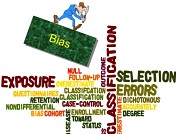Ambigüedades en términos científicos: El uso del "error" y el "sesgo" en estadística
DOI:
https://doi.org/10.25260/EA.18.28.3.0.680Resumen
El uso correcto de la estadística es clave para los profesionales que responden preguntas a partir de datos; entre ellos están los ecólogos. Sin embargo, a estos profesionales, la estadística les suele resultar confusa; en parte, esto se debe a dificultades relacionadas con la terminología. Muchas de estas dificultades derivan de los múltiples significados que tiene un término, tanto dentro como fuera del ámbito estadístico. Para los profesionales de habla hispana, la traducción de términos desde el inglés también aporta a esta confusión. En este trabajo exponemos (e intentamos clarificar) algunos de estos problemas a partir de dos de los términos que conforman la base de un curso de estadística introductorio: error y sesgo. Estos términos son discutidos en los diferentes contextos que se atraviesan en la resolución de problemas utilizando la estadística: muestreo, medición, inferencia y predicción. El error es inherente a la estadística y, según el contexto, se lo usa para cuantificar distintos tipos de variabilidad o para indicar la posibilidad de equivocarse al tomar una decisión. El sesgo, en cambio, refleja la tendencia hacia ciertos valores o elementos y, de no evitarse, conlleva a conclusiones erróneas. Proponemos que los problemas asociados con la ambigüedad léxica se aborden desde la enseñanza universitaria, y sobre esa base brindamos algunas recomendaciones. En este sentido, si bien el presente artículo provee una guía para que los profesionales hagan un uso adecuado de algunos términos estadísticos, también brinda un aporte para el ejercicio docente.
https://doi.org/10.25260/EA.18.28.3.0.680
Citas
Anderson, D. R., D. J. Sweeney, and T. A. Williams. 2008a. Estadística para administración y economía. 10ma edición. Thomson South-Western, Ohio.
Anderson, D. R., D. J. Sweeney, and T. A. Williams. 2008b. Statistics for Business and Economics, Tenth Edition. Thomson South-Western, Ohio.
Barwell, R. 2005. Ambiguity in the mathematics classroom. Language and Education 19(2):118-126.
Batanero, C., J. D. Godino, and R. Roa. 2004. Training Teachers to Teach Probability. Journal of Statistic Education 12(1). URL: ww2.amstat.org/publications/jse/v12n1/batanero.html.
Bolker, B. 2008. Ecological models and data. Princeton University Press, Princeton.
Choi, B. C. K., and A. W. P. Pak. 2005. Bias, overview. Encyclopedia of Biostatistics. 1.
Garfield, J. 1995. How Students Learn Statistics. International Statistical Review 63(1):25-34.
Garfield, J., and A. Ahlgren. 1998. Difficulties in Learning Basic Concepts in Probability and Statistics: Implications for Research. Journal for Research in Mathematics Education 19(1):44-63.
Garfield, J., and D. Ben-Zvi. 2007. How Students Learn Statistics Revisited: A Current Review of Research on Teaching and Learning Statistics. International Statistical Review 75(3):372-396.
Garibaldi, L. A., F. Aristimuño, F. Oddi, and F. Tiribelli. 2017. Inferencia multimodelo en ciencias sociales y ambientales. Ecología Austral 27:348-363.
Hand, D. J. 1994. Deconstructing Statistical Questions. Journal of the Royal Statistical Society. Series A (Statistics in Society) 157(3):317-356.
Hogg, R. V. 1991. Statistical Education: Improvements Are Badly Needed. The American Statistician 45(4):342-343.
Kaplan, J. J., D. G. Fisher, and N. T. Rogness. 2009. Lexical Ambiguity in Statistics: What do students know about the words association, average, confidence, random and spread? Journal of Statistics Education 17(3). URL: www.amstat.org/publications/jse/v17n3/kaplan.html.
Kaplan, J. J., D. G. Fisher, and N. T. Rogness. 2010. Lexical Ambiguity in Statistics: How students use and define the words: association, average, confidence, random and spread. Journal of Statistics Education 18(1). URL: www.amstat.org/publications/jse/v18n2/kaplan.html.
Lavy, I., and M. Mashiach-Eizenberg. 2009. The Interplay between Spoken Language and Informal Definitions of Statistical Concepts. Journal of Statistics Education 17(1). URL: www.amstat.org/publications/jse/v17n1/lavy.html.
Lawson, J. 2010. Design and Analysis of Experiments with SAS. Champman and Hall, CRC Press, Boca Raton.
Menditto, A., M. P Patriarca, and B. Magnusson. 2007. Understanding the meaning of accuracy, trueness and precision. Accreditation and Quality Assurance 12(1):45-47.
Porter, T. M. 1986. The Rise of Statistical Thinking. Princeton University Press, New Jersey.
Rabinovich, S. G. 2006. Measurement errors and uncertainties: theory and practice. Springer, New York.
Richardson, A. M., P. K. Dunn, and R. Hutchins. 2013. Identification and definition of lexically ambiguous words in statistics by tutors and students, International Journal of Mathematical Education in Science and Technology 44(7):1007-1019.
Sackett, D. L. 1979. Bias in analytic research. Journal of Chronic Diseases 32:51-63.
Sokal, R. R., and F. J. Rohlf. 2002. Introducción a la Bioestadística. Reverté S.A., Barcelona.
Stigler, S. M. 1986. The History of Statistics. The Measurement of Uncertainty before 1900. Harvard University Press, Cambridge.
Van Weijen, D. 2012. The Language of (Future) Scientific Communication. Research Trends 31. URL: www.researchtrends.com/issue-31-november-2012/the-language-of-future-scientific-communication.
Walther, B. A., and J. L. Moore. 2005. The concepts of bias, precision and accuracy, and their use in testing the performance of species richness estimators, with a literature review of estimator performance. Ecography 28:815-829.

Descargas
Archivos adicionales
Publicado
Cómo citar
Número
Sección
Licencia
Derechos de autor 2018 Facundo J. Oddi, Francisco J. Aristimuño, Carolina Coulin, Lucas A. Garibaldi

Esta obra está bajo una licencia Creative Commons Reconocimiento 3.0 Unported.
Las/os autoras/es conservan sus derechos de autoras/es: 1) cediendo a la revista el derecho a su primera publicación, y 2) registrando el artículo publicado con una Licencia de Atribución de Creative Commons (CC-BY 4.0), lo que permite a autoras/es y terceros verlo y utilizarlo siempre que mencionen claramente su origen (cita o referencia incluyendo autoría y primera publicación en esta revista). Las/os autores/as pueden hacer otros acuerdos de distribución no exclusiva siempre que indiquen con claridad su origen, así como compartir y divulgar ampliamente la versión publicada de su trabajo.


